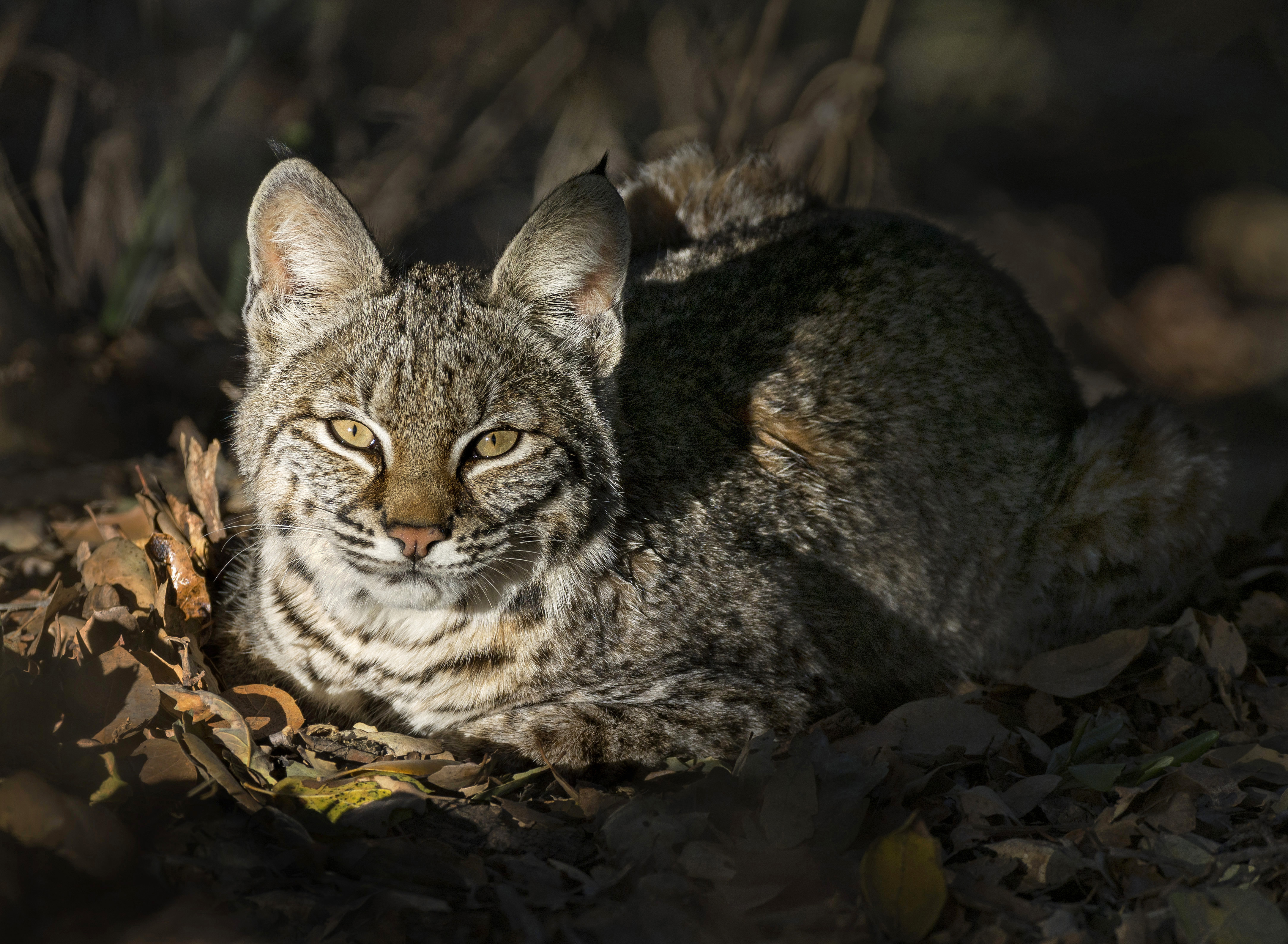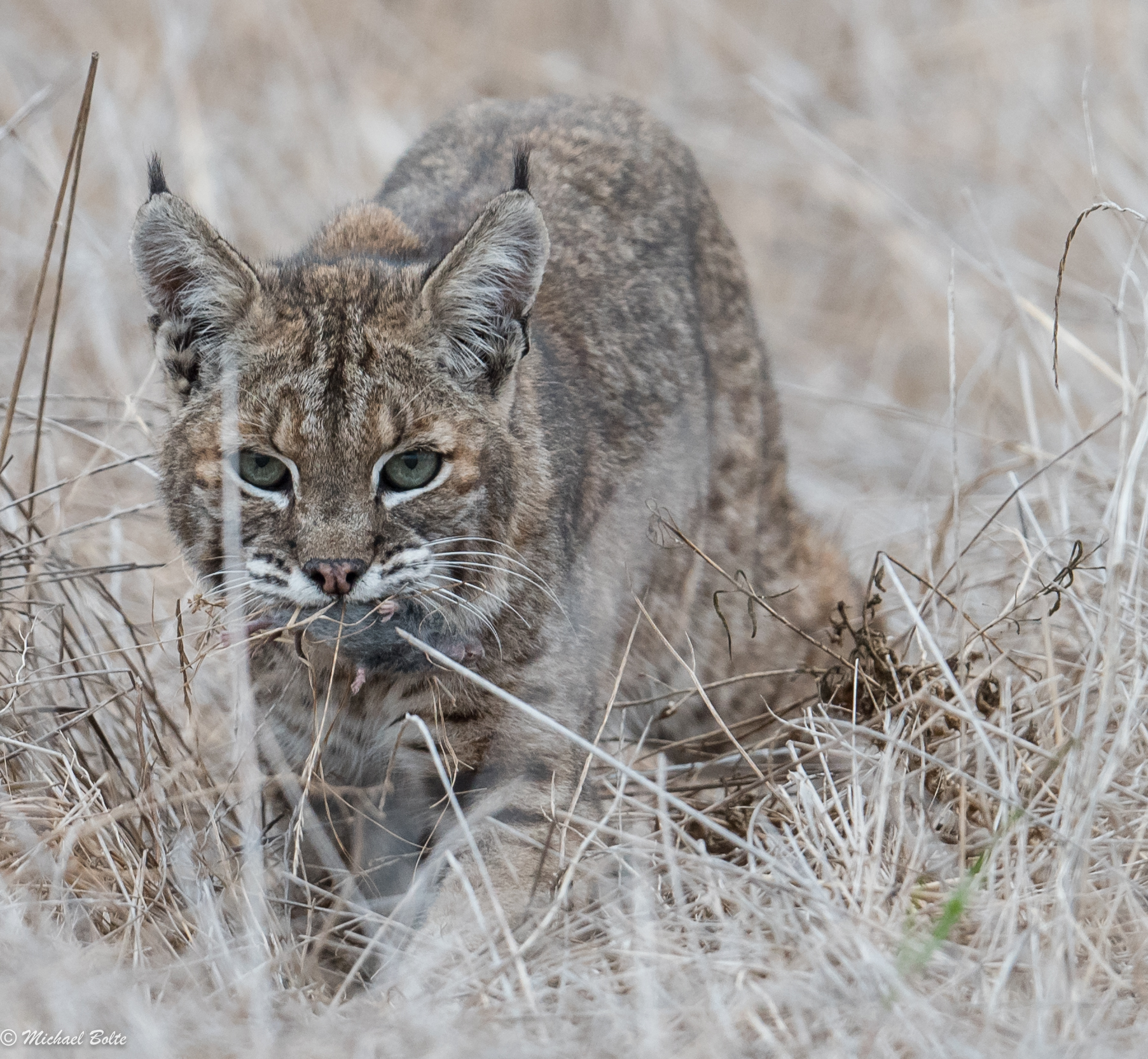by Joe Eaton
 Bobcat kitten – Photo by Joe Galkowski
Bobcat kitten – Photo by Joe Galkowski
(Full article from RATS Tales Spring 2018)
Although it was organized in response to the rodenticide-related deaths of hawks and owls, Raptors Are the Solution is not just about birds of prey. Any creature that might consume a poisoned rodent is at risk for secondary effects. Mountain lions, coyotes, kit foxes, fishers (weasel-like residents of northern and western forests), and other carnivores have been killed by anticoagulant rodenticides (ARs), mostly second-generation compounds like brodifacoum.
Concern about possible sublethal systemic effects of AR exposure has now been borne out by a series of studies led by UCLA researchers Devaughn Fraser and Laurel Serieys, looking at bobcats in Southern California. Direct mortality from AR exposure is rare in bobcats; what’s happening is more insidious. New research indicates that ARs can throw the cats’ immune systems out of whack, making them vulnerable to mites—tiny spiderlike skin parasites—that cause notoedric mange, a debilitating and often fatal condition.
The mountains above Los Angeles used to be a good place to be a bobcat: chaparral-covered hillsides with abundant rabbits and ground squirrels supported an unusually dense population. National Park Service biologists have tracked their movements in the wildlands of the Santa Monica Mountains National Recreation Area since 1996. Radio-tagged bobcats also hunted in city parks, vineyards and olive groves, golf courses, and residential neighborhoods bordering open space, even under the Hollywood sign. That was before the plague years.
The first case of notoedric mange in the area was diagnosed in 2001; the cats may have picked up the mites from their prey. Over the next few years the bobcat population crashed, with average annual survival of tagged bobcats dropping by 49%. The dieoff created a bottleneck effect, leaving a remnant with reduced genetic diversity. Recovery has been slow: “The population is at least stable but not at pre 2002 levels,” says Fraser. “We’re still finding mangy cats.”
As early as 2007, National Park Service biologist Seth Riley and co-authors reported a statistical association between mange and AR exposure in bobcats. Biologists knew that rodenticides had caused multiple coyote deaths in the region, with the canids, like the poisons’ primary targets, succumbing to internal bleeding. But only one bobcat is known to have died that way. Like domestic cats, bobcats appear more resistant to the anti-clotting effects of these substances. But instead of direct mortality, could there be a link between ARs and the outbreak of mange?
Laurel Serieys, who is currently affiliated with UC Santa Cruz and the University of Cape Town and studying caracals (lynx-like wild cats) in South Africa, tackled that question in her UCLA doctoral dissertation research. She documented the pervasiveness of AR exposure, even to fetal kittens in their mothers’ wombs. Analysis based on necropsies of mange victims showed high levels of ARs in liver tissue, with the second-generation ARs brodifacoum and bromadiolone most prevalent and the first generation AR diphacinone widespread; 98 percent of the cats in one sample of bobcats with mange had been exposed to an anticoagulant. Serieys was unable to identify any other factor that might be causing immune system dysfunction. She screened her subjects for pathogens to which bobcats are susceptible, including some, like feline immunodeficiency virus, that they share with domestic cats, but found no relationship between other diseases and AR exposure.
Looking for spatial patterns, Serieys reported single-family high-density residential housing and golf courses as significant predictors of exposure. An independent study described off-label use of ARs in residential areas within the Santa Monica Mountains National Recreation Area, with some baits placed more than 100 meters (328 feet) from the nearest building. Clandestine marijuana growers in the National Recreation Area may also be using ARs; rodenticide use by growers has been implicated in the deaths of fishers in the Sierra Nevada.
Despite these multiple lines of evidence, the processes linking rodenticides and mange remained unclear until recently. Two recently published articles make a persuasive case for a causal connection. Devaughn Fraser, a UCLA lecturer who had previously studied insecticide impacts on bats, and UCLA post-doc Alice Mouton teamed with Serieys and six other researchers to discover how AR exposure increased the bobcats’ vulnerability to mange. It seems to be at least in part a matter of gene expression. While ARs don’t cause mutations that alter the genetic code and get passed on to future generations, they, like other stressors, can change how much of a particular protein a gene produces. The scientists identified 1783 bobcat genes that were affected; 530 were down-regulated, shutting down or slowing their activity, while 1253 up-regulated genes went into overdrive.
“The immune function was our strongest signal,” Fraser explains. The mammalian immune system is complex, with both general and specific responses to pathogens and several kinds of specialized blood cells that attack invaders. Serieys’ work indicates that with AR exposure, the body either fails to produce the proper kind of anti-pathogen cells or produces too many of them, eventually exhausting the immune system. Either way, the host’s defenses are down. Genes that help make the skin an effective barrier against pathogens were also affected, as were others involving liver metabolism.
Some questions remain open: the existing data can’t differentiate between the effects of FGARs and SGARSs or reveal dose-response relationships. With existing methods, Fraser says that would require deliberately exposing live animal subjects to rodenticides. She ‘s working on a blood-based assay procedure that might yield some answers.
Meanwhile, there’s concern that the AR/mange syndrome may not be limited to bobcats. In the Bakersfield area, endangered San Joaquin kit foxes have succumbed to sarcoptic mange, caused by a different mite species. Some have also been fatally poisoned by brodifacoum. Are the foxes also responding more like bobcats than like coyotes, with compromised immune systems and other sublethal effects? Stella McMillin of the California Department of Fish and Wildlife says her agency is monitoring the kit fox population and looking for correlations between mange and rodenticide exposure: “Both studies are in progress so we don’t have any data to report yet.”
“Overall, our results show that the focus on the lethal effects of toxicants developed for pest control which cause a failure of blood to clot in target species, may be misplaced,” Fraser and her co- authors concluded in the Molecular Ecology article. “Individual fitness and population persistence may be critically impacted without signs of the target effects of ARs.” Mapping their sublethal effects “may be a new, previously unacknowledged priority for future research.”

